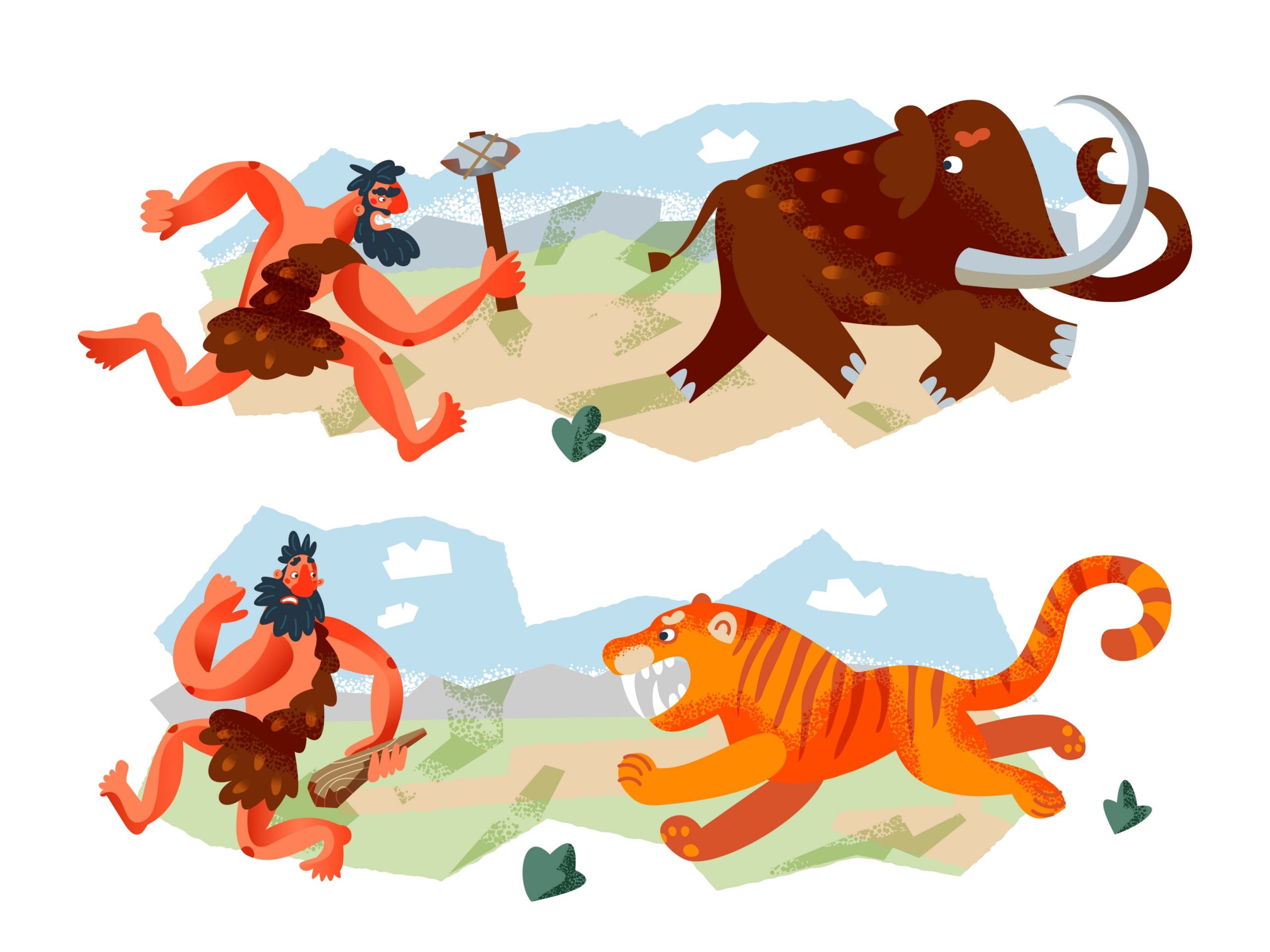Meant to move

When I first started working with Jess*, we discovered that she could get to 3pm without leaving her desk – and without realising it.
Sound familiar? When we can do much of our work via a screen – and often from home – there’s no compelling reason to move except to visit the bathroom. If you’re in the office, you might walk to meetings – where you sit down again!
In our life generally, the internet means we can get alot done without having to leave the comfort of our home. If we go out, we can drive most places without affecting our daily step count. Even if you make time for exercise, that may be only for an hour or so.
Meant to move
These days, moving is a choice not a necessity. Which means it’s quite hard to take on board that the primary reason for our brain’s development was to facilitate movement. Our most primitive ancestors – think amoebas – evolved the capacity to move away from danger and towards rewards to survive another day.
What’s more, the latest neuroscience tells us that our ability to think evolved with our need to move – for example, how to swing through trees at speed or how to remember how to get home after a hunting expedition.
Virtual tigers
Consider our caveman friend in the picture. When surprised with a hungry sabre-toothed tiger, he would immediately have experienced the fight/flight response you will be familiar with – heart racing, breath shallow, muscles geared for action.
He would have run to safety (hopefully) and, when clear of the threat, relaxed. I imagine him sitting round the fire with his fellow cave people, embroidering the anecdote and making himself the hero of the day!
We’re not at risk of being eaten by tigers anymore. However, we’re getting a flow of constant stressors – think of them as virtual baby tigers – from the comfort of our desk. For example, being put on the spot by a senior stakeholder in a meeting, being faced with multiple deadlines, or your boss wanting something “now”.
Beware the enemy within
Our body reacts in the same way as our caveman’s did, but it’s a bit like the caveman’s glued to the spot in front of the tiger. The stress has nowhere to go.
Instead of running, our stress leaks out in the urge to do something.
Maybe you find yourself reflexively answering an email that’s got your back up, or diving in to fix a problem that could have been better handled by your team, or doing busy work that has the illusion of productivity whilst usually not being what’s most important. Not to mention reaching for your phone to look at socials.
What’s more, because the stressors keep coming, our body keeps on generating cortisol, a two-faced hormone that’s designed to get us through stressful situations.
Our caveman would have burned it off with a quick sprint, but our sedentary life means it starts attacking us from the inside causing inflammation and impacting our health, our energy, our sleep and our ability to function.
Move to think
Our tendency to try to figure things out without moving means we’re prone to rumination, worrying about what might happen rather than thinking productively.
Quoting leadership experts Carolyn Coughlin and Jennifer Garvey-Berger, “Evolution prepared us to move, and our modern world tells us to just sit down and think about things”.
Not only does moving reboot your brain’s thinking patterns but research has shown that, if we move before we think, we’re more creative when we sit down again.
Move more
The upshot is that if you want to manage your stress, be less reactive and think more clearly – as well as protect your health – you need to move more.
If you like exercise, then getting breathless with a vigorous run or workout is a good option as it burns off cortisol and signals our body to chill out. I know I find it much easier to relax after I’ve had a full-on tennis coaching session or panted my way up some hills on the bike.
However, this isn’t always possible when you need it most and you may not enjoy getting sweaty. Many of my coaching clients find that just going for a short walk helps them feel better and think more clearly.
If you can’t get away from your desk, I recommend shaking off the stress on the spot. Just stand up, bounce up and down on your knees, go floppy and just shake out your arms and hands. I find it really effective when I’m feeling agitated.
Don’t rely on yourself to remember.
Stick a post-it note on your laptop, set an alarm once an hour to step away from your desk for a few minutes, or schedule a recurring appointment with yourself to go for a 20 minute walk. Little and often is a great start.
*Jess is a fictional leader based on real-life coaching clients
Alison Reid is an executive and leadership coach who helps senior managers and directors lead with confidence and stay calm under pressure. She's the author of Unleash Your Leadership : How to Worry Less and Achieve More. Download an extract or buy the book.
Sign up to her mailing list to receive blogs like these direct to your inbox.
